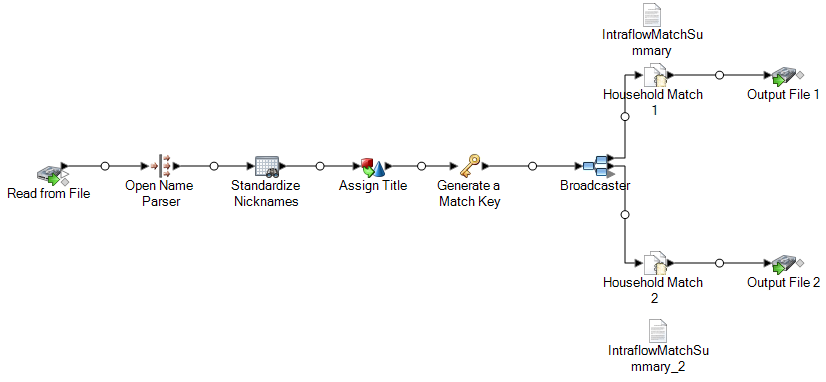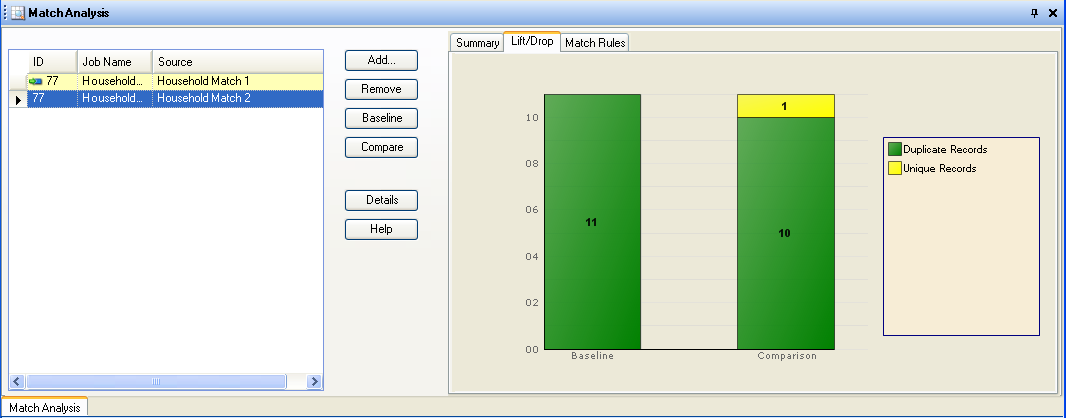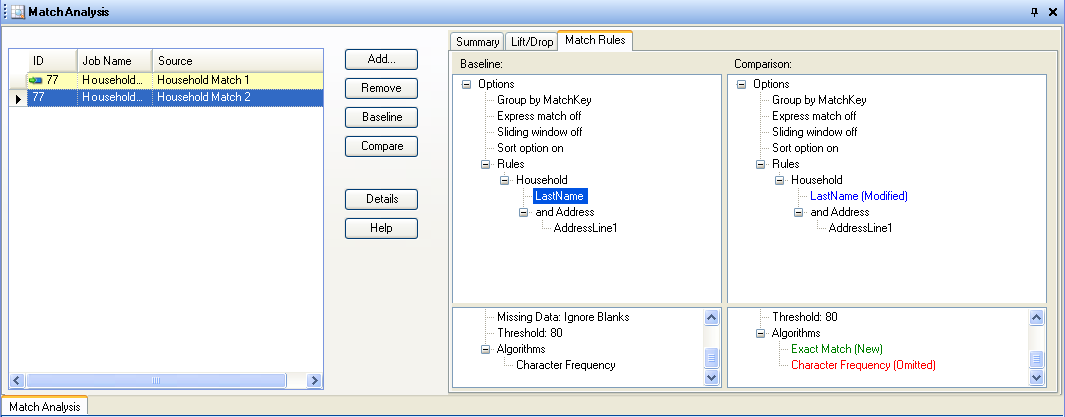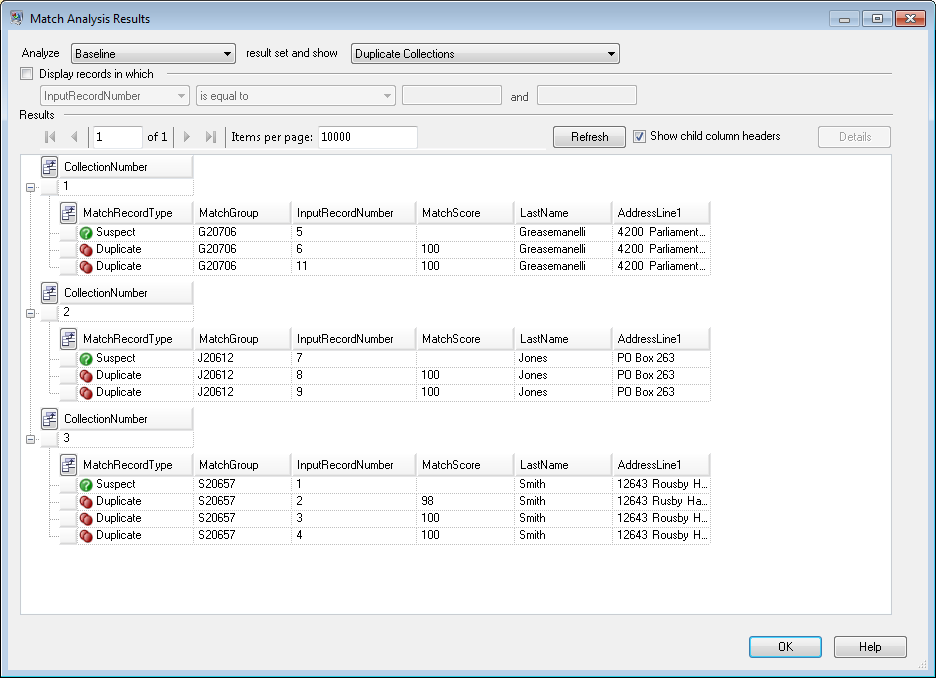Example: Using Match Analysis
This example demonstrates how to use the Match Analysis tool to compare the lift/drop rates of two different matches. Before the data is sent through a matcher, it is split into two streams using a Broadcaster. Each stream is then sent through an Intraflow Match stage. Each data stream includes identical copies of the processed data. Each Intraflow Match stage uses different matching algorithm and generates Match Analysis data that you can use to compare the lift/drop of various matches.

This example dataflow is available in Enterprise Designer. Go to and select HouseholdRelationshipsAnalysis. This dataflow requires the following products: Advanced Matching, Data Normalization, and Universal Name. It also requires you to load the Table Lookup core database and the Open Parser base tables.
To use view this example:
- Run the dataflow.
- Select .
- From Browse Match Results window, expand HouseholdRelationshipAnalysis, select Household Match 1 and Household Match 2 from the Source list, and then click Add.
- Select Household Match 1 in the Match Results List and click Compare. This displays results on the Summary tab.
- Click the Lift/Drop tab. This displays the Lift/Drop chart.

This chart shows the differences between the duplicate and unique records generated for the different match rules used.
- Click the Match Rules tab. This displays the match rules comparison.

From this tab you can see that the algorithm has been changed; Character Frequency is omitted and Exact Match has been added.
- Click Details.
- Select Duplicate Collections from the show list and then click Refresh.
- Expand each CollectionNumber to view the Suspect and Duplicate records for each duplicate collection.

- Compare the collections in the Detail view to the output file created.